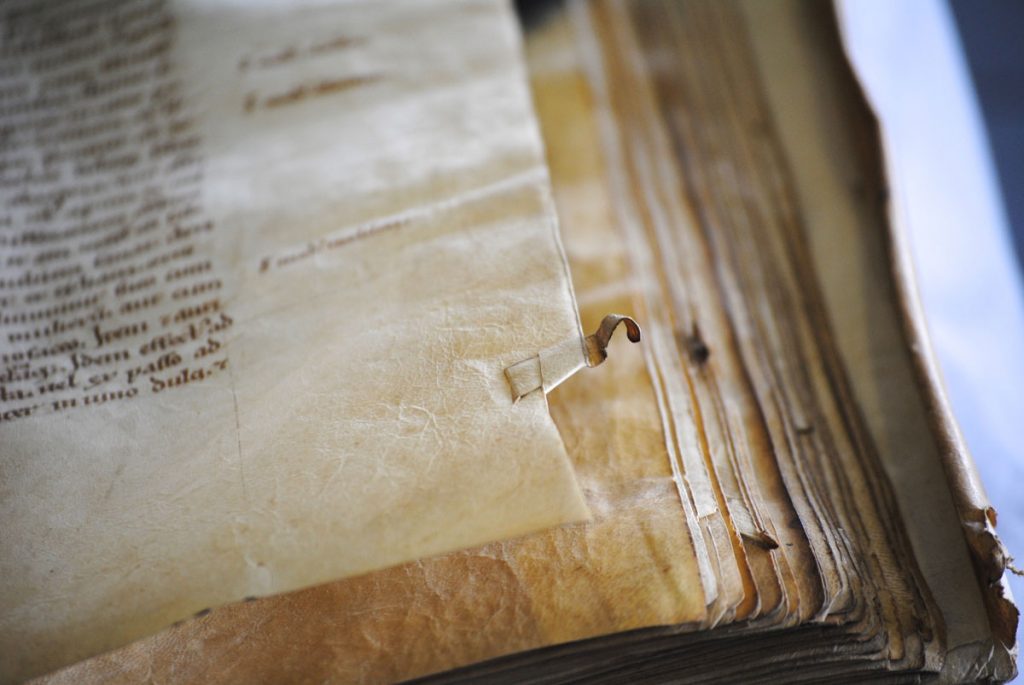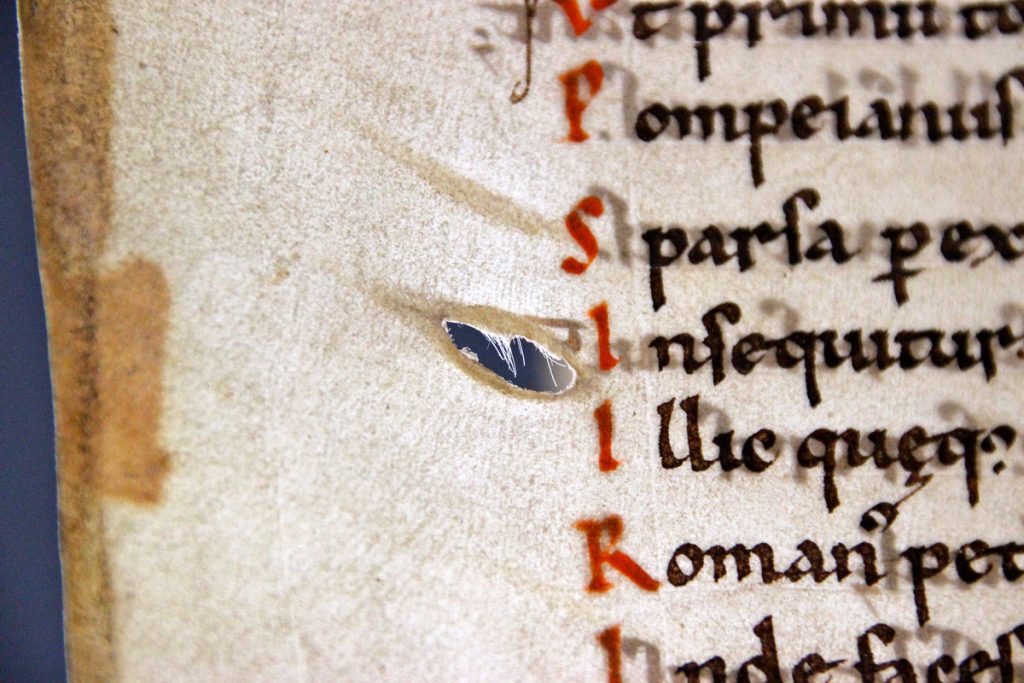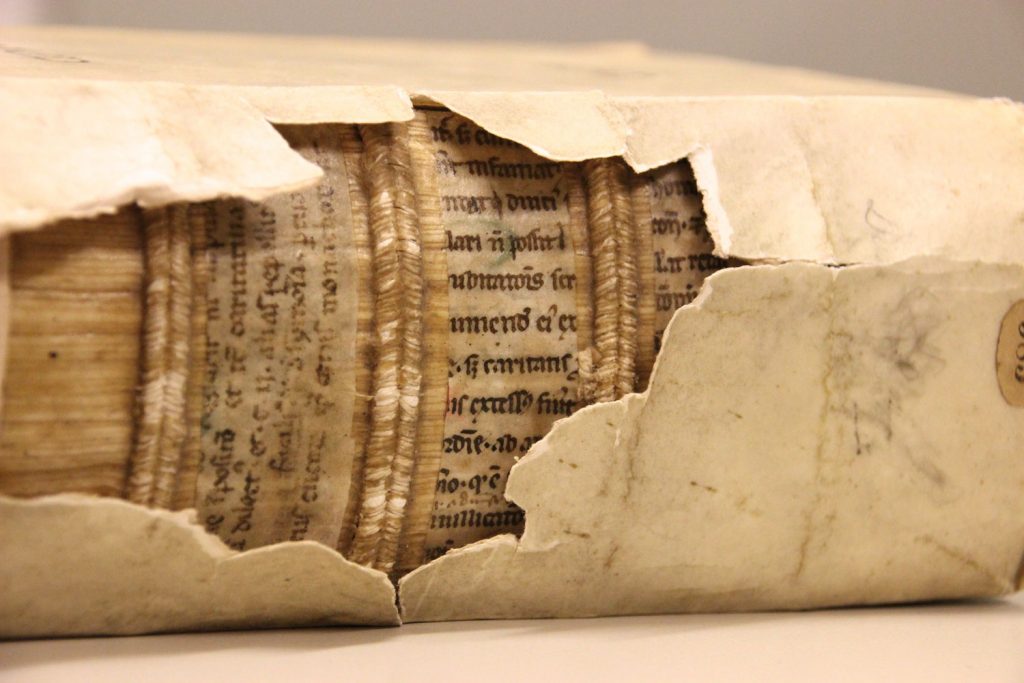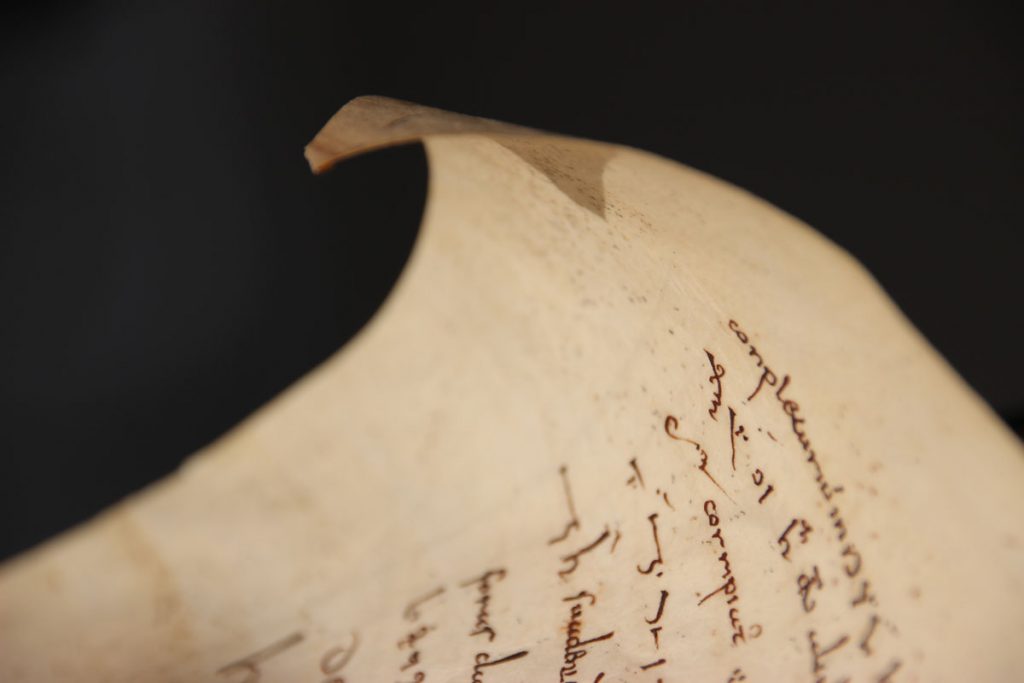Dr. Erik Kwakkel, a new Professor at the iSchool, recently published a book and teaching tool about medieval manuscripts, Books Before Print. We sat down with him to ask him a few questions about the book and his teaching.
How did this book come about?
I started a blog in 2014 for a group research project. I’d take some time every Friday and write about a particular topic, and when the project was nearing completion, I moved all blog pieces over to my own personal blog. I got some comments from students that they had found the blog posts useful, and I started thinking about how I could use these blog posts to form a book. I thought, “If I want to make a book about medieval manuscripts providing an accessible introduction – what would I need to discuss?” With that in mind, I wrote about 50 posts between 2014 and 2016, roughly 1200 words each, using images from Creative Commons or images I had taken. And this formed the basis of my book.
What makes this book different?
This is a case-based textbook, and follows a blog format. It really meets the needs of today’s students, as it follows the type of online reading they already do. Each section has a brief introduction, and includes images and a case that I have seen or encountered in my work. I was able to keep some of the funny blog titles like “The Skinny on Bad Parchment” and left the language and tone very airy. It isn’t an overly dense or typical textbook. I avoided using a lot of jargon so it is really accessible. Terminology is explained in the introduction, and there is a special index and glossary as well. So if you have no idea what parchment is, you can look in the index for topics like Parchment, animals made from parchment, etc.
How can it be used for teaching?
This is a great teaching tool or textbook. For instructors I provided a set of recommended readings per topic, available at the end of the book, so it can easily be used. You would have everything you need to weave medieval manuscripts into your course – it could be used in humanities or history classes as well. Manuscripts are fun. You don’t have to be a scholar, you can study as a student, and learn a lot about the use of manuscripts, reading and material culture.


Medieval bookmark made through incision in parchment. Leiden University Library, BPL 2001. Photo credit: Erik Kwakkel
Who published the book?
ARC Humanities published the book. They do a lot of middle ages or medieval book publishing, but this one deviates a bit from their standard template. And I spent a lot of time to include quality images for every topic, so it is more visual and artistic than the usual book. The first and second edition have sold out already!
Have you published other books before?
Yes, many, mostly specialized, but this is the most fun thing I’ve written and made – it’s my little baby! This one is much more personal. I have one forthcoming in July, about medical manuscripts and the birth of medicine and handwritten books. This blogging has certainly helped my writing!
Learn more about Erik on his profile page
Read his award-winning blog, Medieval Books
Learn more about the book: Books Before Print available via ARC Humanities Press


Hole in parchment with hair of the cow visible. Leiden University Library, BUR Q1. Photo credit: Erik Kwakkel


Damaged bookbinding revealing medieval manuscript inside. Leiden University Library, 583 E24. Photo credit: Erik Kwakkel



